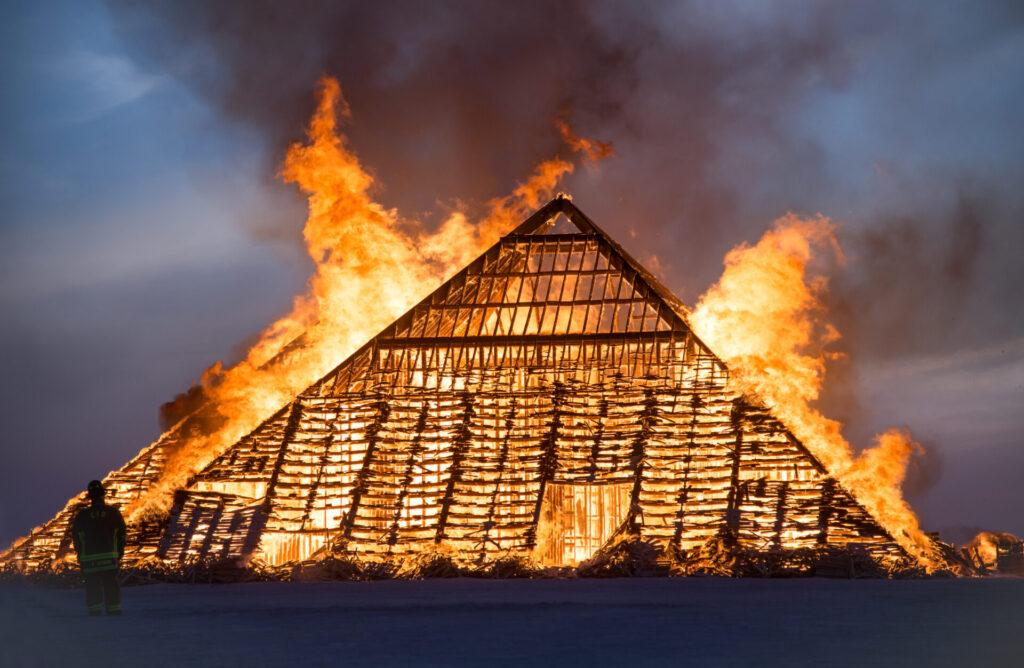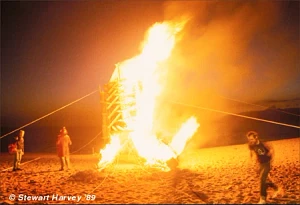Fire art is part of the essential fabric of Black Rock City, and to keep creating it, we need to do so safely. Whether you’re incorporating fire into your art installation, theme camp, mutant vehicle or performance, it’s essential that you don’t harm others or the playa. This section contains important information about creating fire art safely and exhibiting it on playa.
Thank you for taking the time to read this information thoroughly, and for wanting to create fire art for Burning Man. Now… let’s burn some stuff! Safely!


Find some inspiration in this selection of Fire Art




























